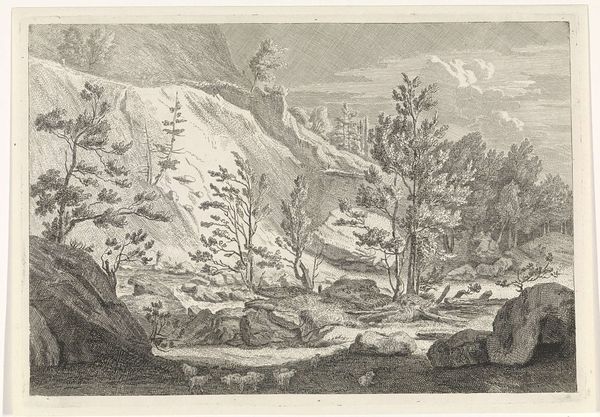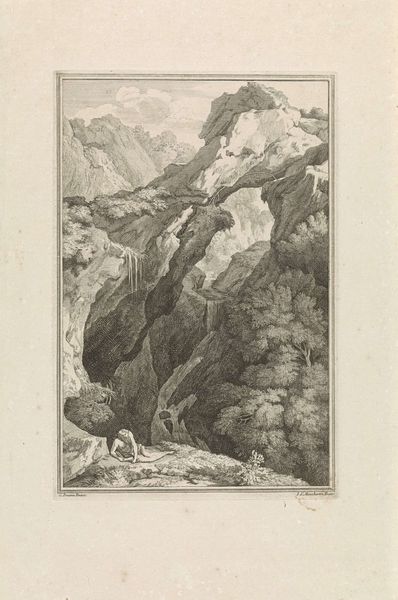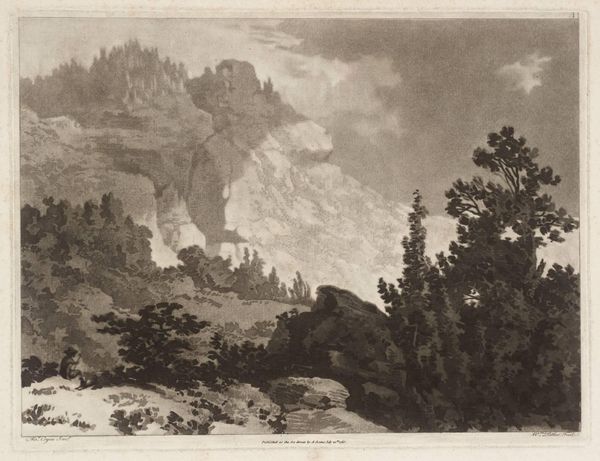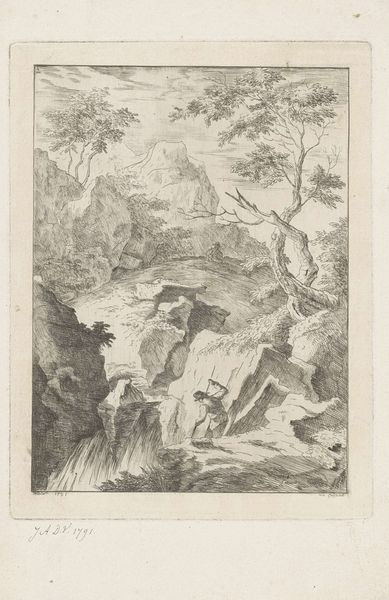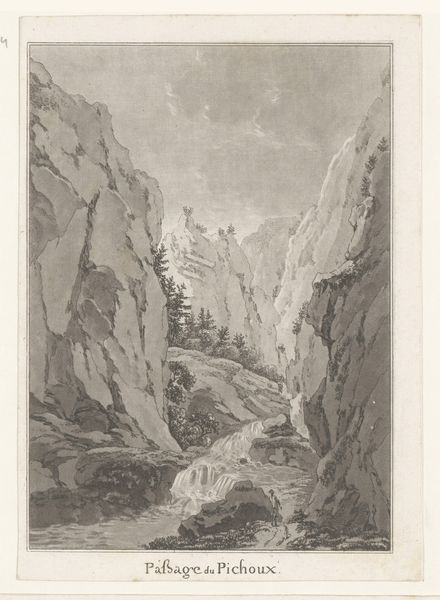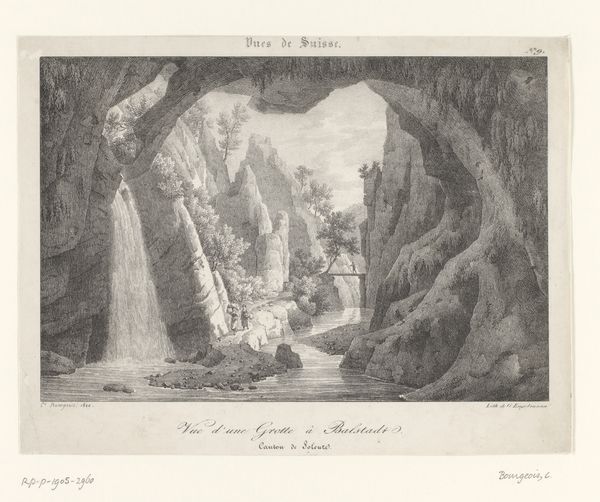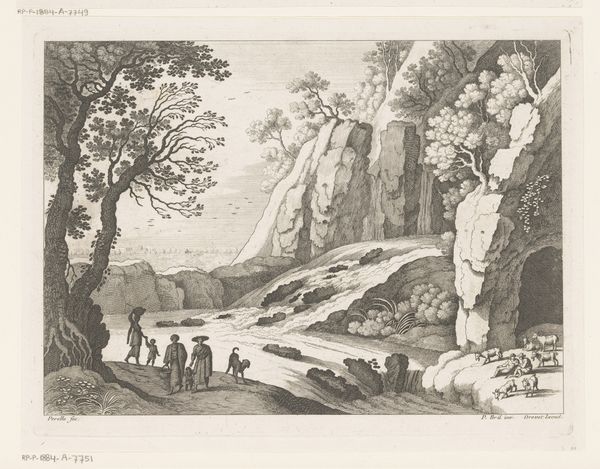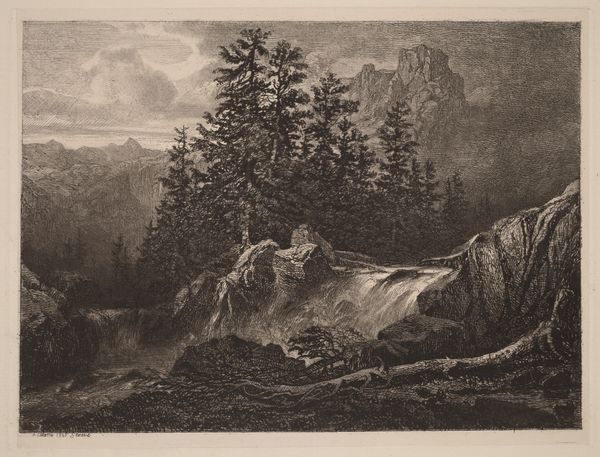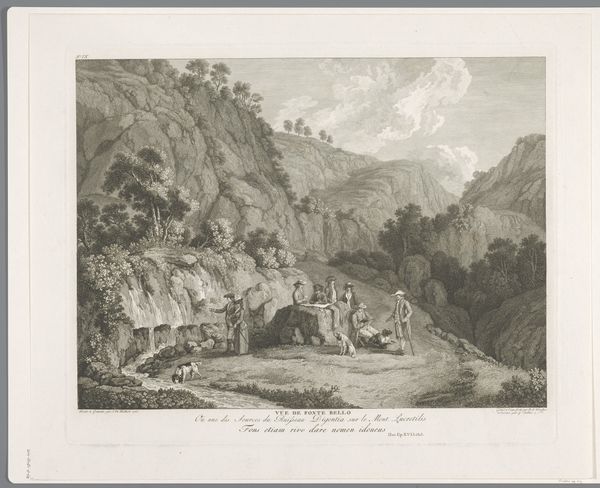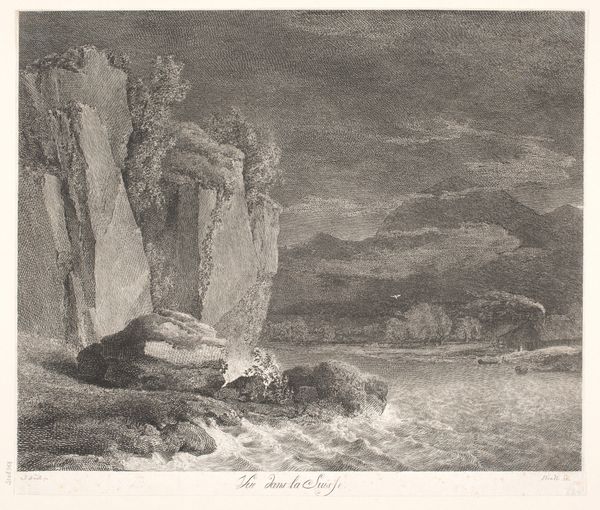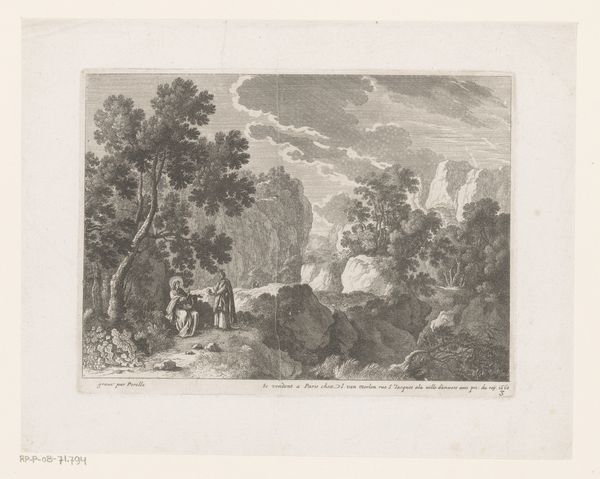
drawing, pencil
#
drawing
#
landscape
#
figuration
#
pencil drawing
#
romanticism
#
pencil
#
history-painting
#
realism
Dimensions: height 116 mm, width 161 mm
Copyright: Rijks Museum: Open Domain
Editor: Here we have an 1810 pencil drawing called "View of the Ruins of Pfeffingen". It’s… evocative. Sort of brooding. What's your interpretation? Curator: This piece speaks volumes about the socio-political currents of the early 19th century. Note the prominence of the ruins – what do ruins signify in this context? It isn’t just about picturesque decay; it represents a critique of power, a romanticized longing for a lost past, before industrialization irrevocably transformed Europe. Editor: So the crumbling castle is almost a metaphor? Curator: Precisely! And observe the two figures in the foreground. They're dwarfed by the landscape, right? This echoes a sense of human insignificance in the face of historical forces. Consider also that ruins were a popular subject for artists and writers grappling with ideas of national identity and collective memory, especially after the Napoleonic wars. Is it possible that by looking at an abandoned and possibly attacked ruin, they think to their present day political context? Editor: I didn’t consider that. So it's not just a pretty picture of some rocks. Curator: It's a visual document that speaks to the anxieties and aspirations of a society undergoing profound transformation. The choice of pencil, the delicate rendering… all contribute to the atmosphere of fragility and impermanence. It highlights the relationship between landscape, history, and social critique. Editor: Wow, I'm seeing this in a completely different light now. It’s more loaded than I thought. Curator: Art always is. Looking at it through a social and historical lens unlocks all its hidden meanings. Editor: I’ll remember that. Thanks!
Comments
No comments
Be the first to comment and join the conversation on the ultimate creative platform.


